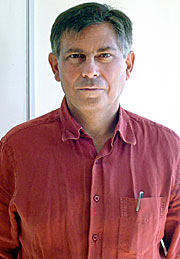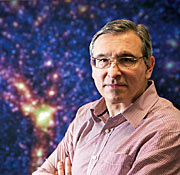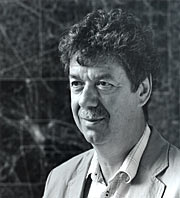- News
- Science
- Scientific Bodies
- Divisions
- Commissions
- Commission A1 Structure
- Commission A2 Structure
- Commission A3 Structure
- Commission A4 Structure
- Commission B1 Structure
- Commission B2 Structure
- Commission B3 Structure
- Commission B4 Structure
- Commission B5 Structure
- Commission B6 Structure
- Commission B7 Structure
- Commission C1 Structure
- Commission C2 Structure
- Commission C3 Structure
- Commission C4 Structure
- Commission D1 Structure
- Commission E1 Structure
- Commission E2 Structure
- Commission E3 Structure
- Commission E4 Structure
- Commission F1 Structure
- Commission F2 Structure
- Commission F3 Structure
- Commission F4 Structure
- Commission G1 Structure
- Commission G2 Structure
- Commission G3 Structure
- Commission G4 Structure
- Commission G5 Structure
- Commission H1 Structure
- Commission H2 Structure
- Commission H3 Structure
- Commission H4 Structure
- Commission J1 Structure
- Commission J2 Structure
- Commission J3 Structure
- Commission X1 Structure
- Commission X2 Structure
- Past Commission Organising Committees
- Working Groups
- Centres
- Scientific Meetings
- Rules & Guidelines
- General Assemblies
- Meeting Proposals
- Future IAU Meetings
- General Assemblies
- EC Meetings
- Officers' Meetings
- Regional Meetings
- Symposia
- Focus Meetings
- Institutional Meetings
- IAU Offices Meetings
- IAU-Sponsored Meetings
- Letters of Intent submitted for 2024
- Letters of Intent submitted for 2023
- Letters of Intent submitted for 2022
- Letters of Intent submitted for 2021
- Letters of Intent submitted for 2020
- Past IAU Meetings
- Templates
- Other Meetings
- Grants & Prizes
- Scientific Bodies
- Publications
- IAU Publications
- IAU Strategic Plan
- Symposia
- WGSBN Bulletins
- Regional Meetings
- Information Bulletins/Catalyst
- E-Newsletters
- Focus Meetings
- Transactions A
- Transactions B
- Related Publications
- GA Newspapers
- CAPjournal
- IAU Books
- Brochures
- IAU Offices
- WG Reports
- Commission Reports
- Division Reports
- Past IAU Publications
- Rules, Guidelines and Instructions for Proceedings
- Publishers
- IAU Publications
- Administration
- About the IAU
- Statutes & Rules
- IAU Policies
- IAU Executive Bodies
- IAU Secretariat
- Resolutions
- Members Administration
- Administrative Dates & Deadlines
- International Organisations Relations
- Donate to the IAU
- Training in Astronomy
- Astronomy for Education
- Astronomy for Development
- Astronomy for the Public
- Office for Astronomy Outreach
- FAQ
- Themes
- Satellite Constellations
- Astronomy in Everyday Life
- How to Report a Discovery
- Careers in Astronomy
- Defining our Place in the Cosmos
- The Constellations
- Light Pollution
- Measuring the Universe
- Near Earth Objects
- How to Participate in Astronomy Research
- Naming of Astronomical Objects
- Naming of Exoplanets
- Buying Star Names
- Naming Stars
- Pluto and the Solar System
- IAU Member Statistics
- Our Moon: the Moon
- Meteors & Meteorites: The IAU Definitions of Meteor Terms
- UNESCO-IAU Portal to the Heritage of Astronomy
- Social Media
- Past Events
- Call for Online Resources
- Astronomy@Home Awards
- Contact
iau1103 — Press Release

1 June 2011
"Gang of Four" receives $500 000 Gruber Cosmology Prize for reconstructing how the Universe grew
Four astronomers who found a way to model the growth of the Universe are the recipients of the 2011 Cosmology Prize from The Peter and Patricia Gruber Foundation. Marc Davis, a professor in the Departments of Astronomy and Physics at the University of California at Berkeley (USA); George Efstathiou, the director of the Kavli Institute for Cosmology in Cambridge (UK); Carlos Frenk, the director of the Institute for Computational Cosmology at Durham University (UK); and Simon White, a director of the Max-Planck Institute for Astrophysics in Garching (Germany) will share the $500 000 award.
The official citation recognises the astronomers — nicknamed the “Gang of Four” by their colleagues and often collectively abbreviated as DEFW — for “their pioneering use of numerical simulations to model and interpret the large-scale distribution of matter in the Universe”. The Gruber Prize recognises both the discovery method that DEFW introduced as well as the collaboration’s subsequent discoveries.
Davis, Efstathiou, Frenk and White will each receive an equal share of the award, along with a gold medal, at a ceremony later this year. They will also deliver a lecture.
Astronomers have always told us what the Universe looks like. Theorists have always invented ideas as to how it came to look that way. Not until the computer age, however, could scientists studying the evolution of the entire Universe decisively match the gossamer of educated guesswork with the blueprint of observational evidence.
The particular piece of evidence that motivated the creation of the DEFW collaboration came in the form of a survey, carried out in 1981 by the Harvard–Smithsonian Center for Astrophysics (CfA) and led by Davis, of 2400 galaxies at various distances — at the time, an extraordinary census of how the heavens look on the largest scales. The CfA survey showed an early hint of what is today called the cosmic web — galaxies grouped into lengthy filaments, or superclusters, separated by vast voids.
Theorists offered two competing ideas that might explain how matter could have coalesced in such a manner. Both theories took into account the presence of dark matter, a mysterious substance that astronomers in the 1970s had come to accept as a necessary piece in the cosmic puzzle in order to explain galaxy motions that otherwise would be violating the laws of physics. One candidate theory was “hot dark matter” — “hot” because at early times the particles would travel at velocities approaching the speed of light. Such speeding particles leave behind the “regular” matter which makes up galaxies and so does not clump around them. The other candidate was “cold dark matter”, relatively sluggish particles that would fall together to build galaxy halos, dragging the regular matter along for the ride.
The Center for Astrophysics survey would allow astronomers to test these interpretations — but only if they could figure out how to model the evolution of the Universe over billions of years.
Enter the Gang of Four. Although other astronomers had been working with N-body simulations — so called because they follow a number of points, N, each representing a concentration of mass — their code couldn’t handle a large enough N to represent large scales in the Universe. Efstathiou, however, suspected that a code used to simulate ionic microcrystals would work. He succeeded in adapting it for cosmology, and Davis, Frenk and White then used that code to demonstrate that a simulated Universe based on the hot dark matter theory didn’t remotely match the CfA observations.
Then, in a series of five landmark papers from 1985 to 1988, Davis, Efstathiou, Frenk, and White showed that observations of galaxies, clusters, filaments, and voids were consistent with a simulated Universe that had evolved under the influence of cold dark matter.
"The DEFW papers were instrumental in ushering in a new era where numerical simulations became a standard tool of cosmological studies," says Wendy Freedman, Crawford H. Greenewalt Chair and Director of The Observatories of the Carnegie Institution of Washington, and chair of the 2011 Selection Advisory Board to the Gruber Cosmology Prize.
Cold dark matter — or CDM — is today one of the two key components of the standard cosmological model. The other is the acceleration of the expansion of the Universe, a discovery observers made in the late 1990s that DEFW’s simulations had anticipated. Scientists designate whatever is causing the acceleration with the mathematical symbol lambda (Λ), but it is more commonly known, in a nod to dark matter, as “dark energy”.
Nobody yet knows the exact nature of dark matter or dark energy. Yet as more extensive and more detailed observations of the Universe have accumulated, ΛCDM has become the standard model of cosmology. Today the match between observation and theory indicates that the Universe is composed of 4.6 percent “ordinary” matter, 23.3 percent dark matter, and 72.1 percent dark energy. Numerical simulations of the kind pioneered by DEFW show that a Universe with this astonishingly precise yet remarkably strange composition does indeed develop structures which are a close match to those we see around us.
Notes
The IAU is an international astronomical organisation of about 10 000 professional astronomers from 90 countries. Its mission is to promote and safeguard the science of astronomy in all its aspects through international cooperation. The IAU also serves as the internationally recognised authority for assigning designations to celestial bodies and surface features on them.
The Peter and Patricia Gruber Foundation honours and encourages educational excellence, social justice and scientific achievements that better the human condition. For more information about Foundation guidelines and priorities, please visit www.gruberprizes.org.
The Gruber International Prize Program honours contemporary individuals in the fields of Cosmology, Genetics, Neuroscience, Justice and Women’s Rights, whose groundbreaking work provides new models that inspire and enable fundamental shifts in knowledge and culture. The Selection Advisory Boards choose individuals whose contributions in their respective fields advance our knowledge, potentially have a profound impact on our lives, and, in the case of the Justice and Women’s Rights Prizes, demonstrate courage and commitment in the face of significant obstacles.
In 2000, The Peter and Patricia Gruber Foundation and the International Astronomical Union (IAU) announced an agreement by which the IAU provides its expertise and contacts with professional astronomers worldwide for the nomination and selection of Cosmology Prize winners. Under the agreement, The Peter and Patricia Gruber Foundation also funds a fellowship programme for young astronomers, with the aim of promoting the continued recruitment of new talent into the field.
The official citation reads: The Peter and Patricia Gruber Foundation proudly presents the 2011 Cosmology Prize to Marc Davis, George Efstathiou, Carlos Frenk and Simon White for their pioneering use of numerical simulations to model and interpret the large-scale distribution of matter in the Universe.
Cosmological simulations allow direct confrontation between observation and theory, and have transformed the way we conceive and visualize the growth of structure in the Universe.
The work of Professors Davis, Efstathiou, Frenk and White galvanized support for ”cold dark matter” as the dominant form of matter in the Universe and has thus been instrumental in the crafting of our current cosmological paradigm.
Links
- Media materials and additional background information on the Gruber Prizes can be found at: http://www.gruberprizes.org/Press.php
- Laureates of the Gruber Cosmology Prize: http://www.iau.org/grants_prizes/gruber_foundation/
- IAU website: http://www.iau.org/
Contacts
Raquel Yumi Shida
IAU Deputy Press Officer
Garching bei München, Germany
Tel: +49 89 3200 6177
Email: rshida@eso.org
Cassandra Oryl
Lunchbox Communications
USA
Tel: +1 (202) 309-2263
Email: pr@lunchboxcity.com
Bernetia Akin
The Peter and Patricia Gruber Foundation
USA
Tel: +1 (340) 775-4430
Email: media@gruberprizes.org



